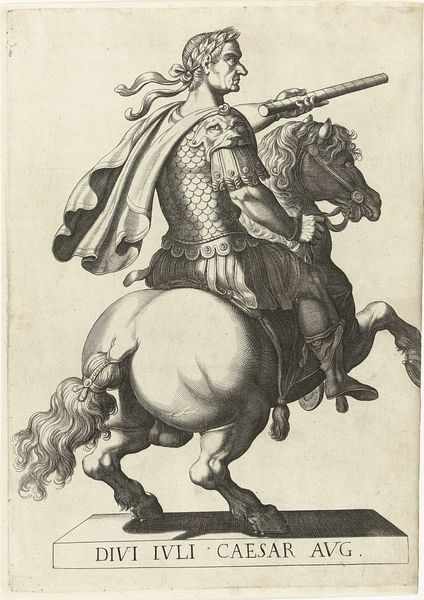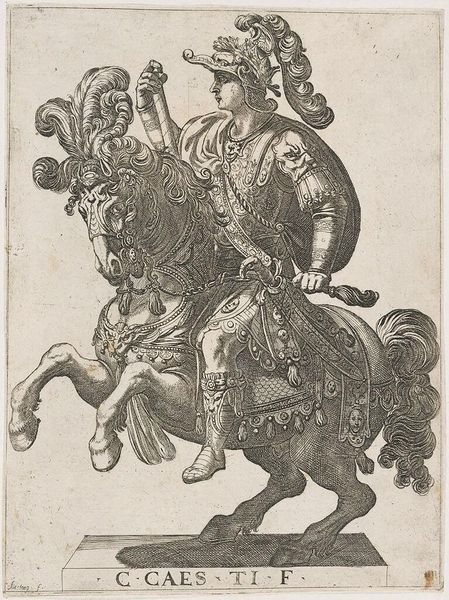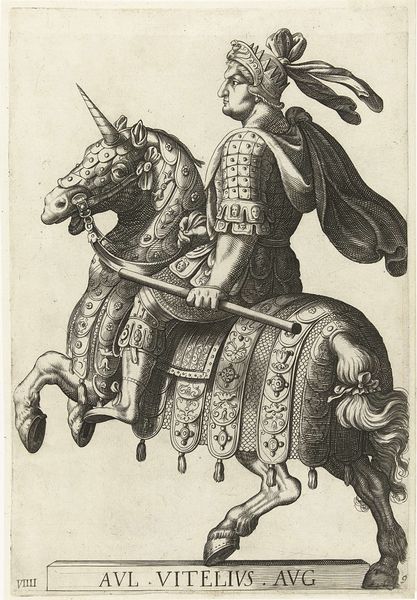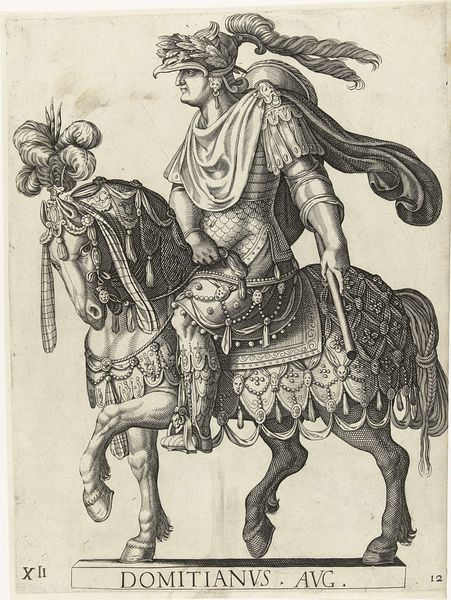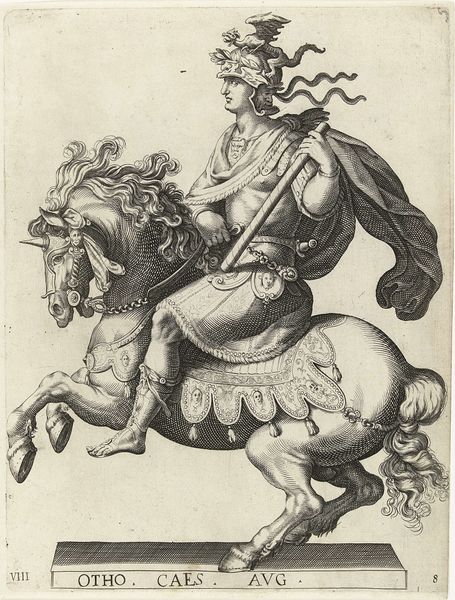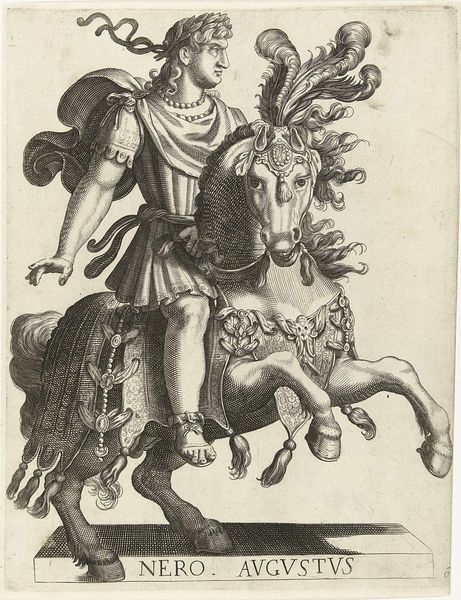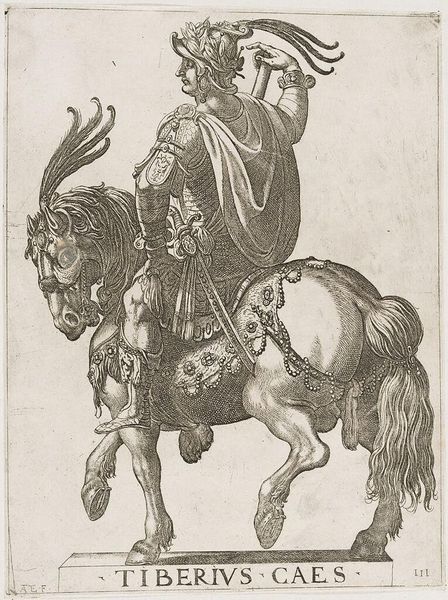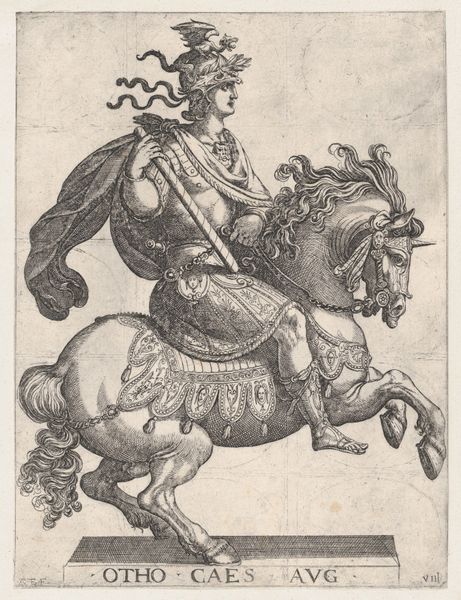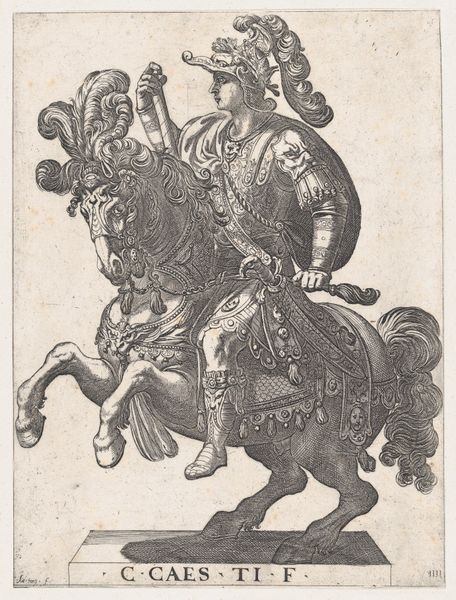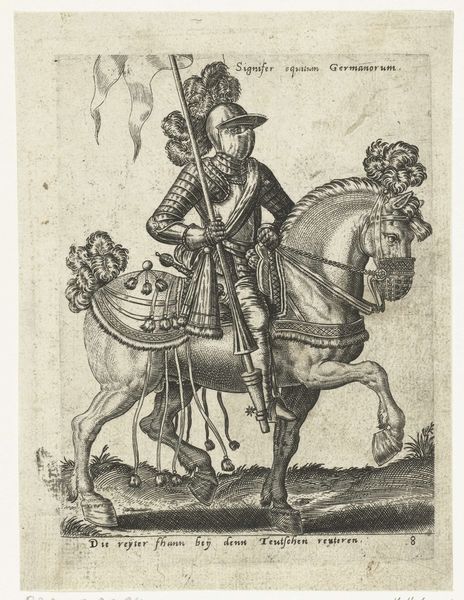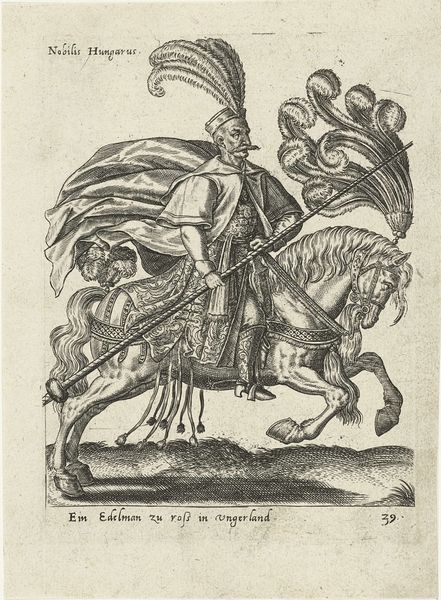
engraving
#
portrait
#
baroque
#
ancient-mediterranean
#
history-painting
#
engraving
Dimensions: height 292 mm, width 222 mm
Copyright: Rijks Museum: Open Domain
Art Historian: Editor: Editor: This is “Equestrian Portrait of a Roman Emperor” made between 1616 and 1620, an engraving. The detail is quite striking; how the artist uses lines to convey such textures. What do you see in this piece? Art Historian: As a materialist, I am interested in understanding its cultural value based on how it was made and who would consume it. Consider the process of engraving itself; a laborious task involving skill and time. This tells me the intended audience wasn't just anyone. The relatively widespread medium of printmaking creates accessibility, yet, at the same time, it maintains the artist’s skill and precision. Editor: So it’s the tension between mass production, but within a higher level context of consumption that’s important? The Roman Emperor indicates ancient valor. Art Historian: Exactly! This engraving revives images of power in ancient Rome. Engravings like this also functioned as models for other artworks, influencing decorative styles or even serving as visual references for painting and sculpture. Were they also challenging perceptions about "high" art versus what we think of as craft by employing the skill and widespread medium? What do you think about the status that the printed images assumed in a European society which gradually became obsessed with collecting and preserving items as investments, objects of knowledge, curiosities or art? Editor: Fascinating; it adds a different layer of appreciation! Thank you. Art Historian: It gives a different nuance and shows an underlying meaning behind an art piece and cultural relevance of the work!
Comments
No comments
Be the first to comment and join the conversation on the ultimate creative platform.
